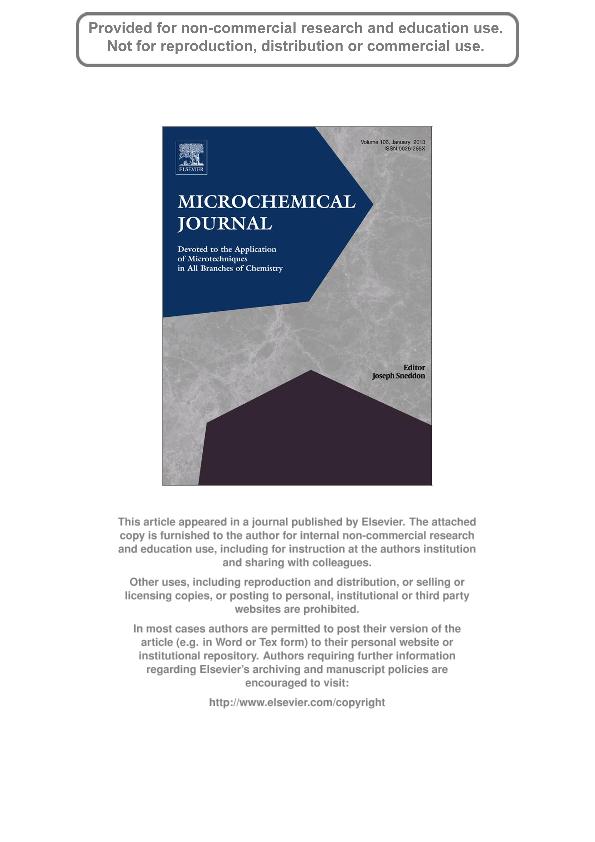Artículo
Development of an electroanalytical method for the determination of lead in Argentina raw propolis based on bismuth electrodes
Pierini, Gastón Dario ; Granero, Adrian Marcelo
; Granero, Adrian Marcelo ; Di Nezio, Maria Susana; Centurión, María Eugenia; Zon, María Alicia
; Di Nezio, Maria Susana; Centurión, María Eugenia; Zon, María Alicia ; Fernandez, Hector
; Fernandez, Hector
 ; Granero, Adrian Marcelo
; Granero, Adrian Marcelo ; Di Nezio, Maria Susana; Centurión, María Eugenia; Zon, María Alicia
; Di Nezio, Maria Susana; Centurión, María Eugenia; Zon, María Alicia ; Fernandez, Hector
; Fernandez, Hector
Fecha de publicación:
05/2012
Editorial:
Elsevier Science
Revista:
Microchemical Journal
ISSN:
0026-265X
Idioma:
Inglés
Tipo de recurso:
Artículo publicado
Clasificación temática:
Resumen
Propolis is a honeybee product which contains lead as one of the main contaminants. Taking into account that this product is used in the food industry, the Código Alimentario Argentino establishes maximum allowable level for raw propolis. Therefore, in this study an electroanalytical method to determine this metal in Argentina raw propolis samples was developed. A bismuth film electrode plated on a modified glassy carbon electrode was prepared. The use of these electrodes has been proposed as an alternative to mercury film electrodes in electroanalytical chemistry due to low toxicity of bismuth (environmentally friendly metal). The method presents a linear range between 1 and 50 μg L− 1 of Pb(II). The limits of detection and quantification were 0.6 μg L− 1 and 1.84 μg L− 1, respectively. The reproducibility and repeatability calculated as the relative standard deviations were 7.4% and 7.0%, respectively. The sample throughput was 21 sample h− 1. Argentina raw propolis samples were analyzed and some of them showed high levels of lead. The obtained results with this method are in good agreement with that obtained with the ICP-AES technique. Moreover, it is a good alternative to the quality control of raw propolis.
Palabras clave:
Propolis
,
Lead Determination
,
Bismuth Electrode
,
Electroanalysis
Archivos asociados
Licencia
Identificadores
Colecciones
Articulos(CCT - CORDOBA)
Articulos de CTRO.CIENTIFICO TECNOL.CONICET - CORDOBA
Articulos de CTRO.CIENTIFICO TECNOL.CONICET - CORDOBA
Citación
Pierini, Gastón Dario; Granero, Adrian Marcelo; Di Nezio, Maria Susana; Centurión, María Eugenia; Zon, María Alicia; et al.; Development of an electroanalytical method for the determination of lead in Argentina raw propolis based on bismuth electrodes; Elsevier Science; Microchemical Journal; 106; 5-2012; 102-106
Compartir
Altmétricas



